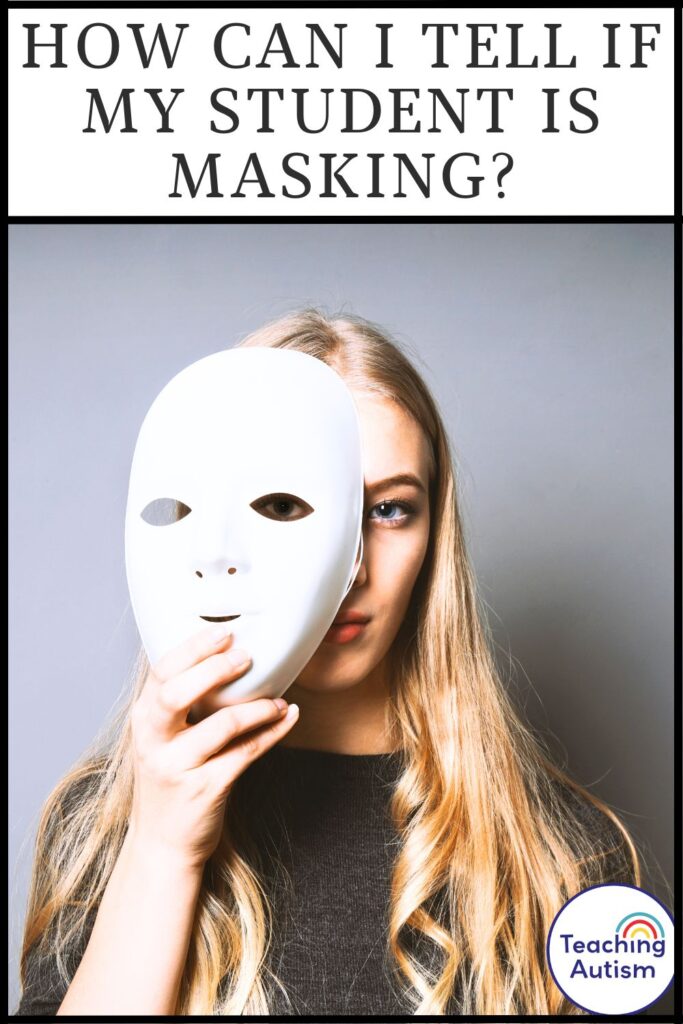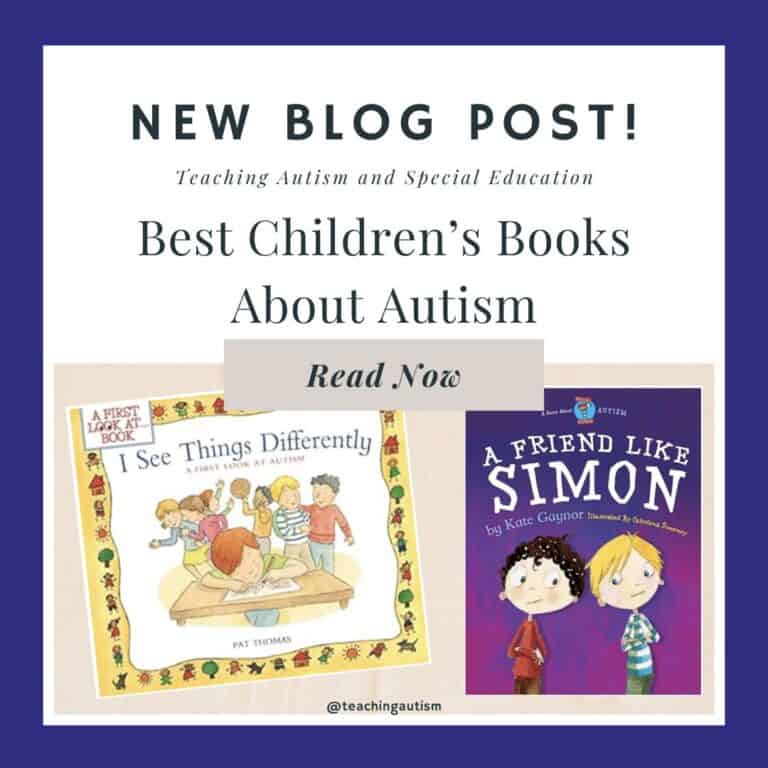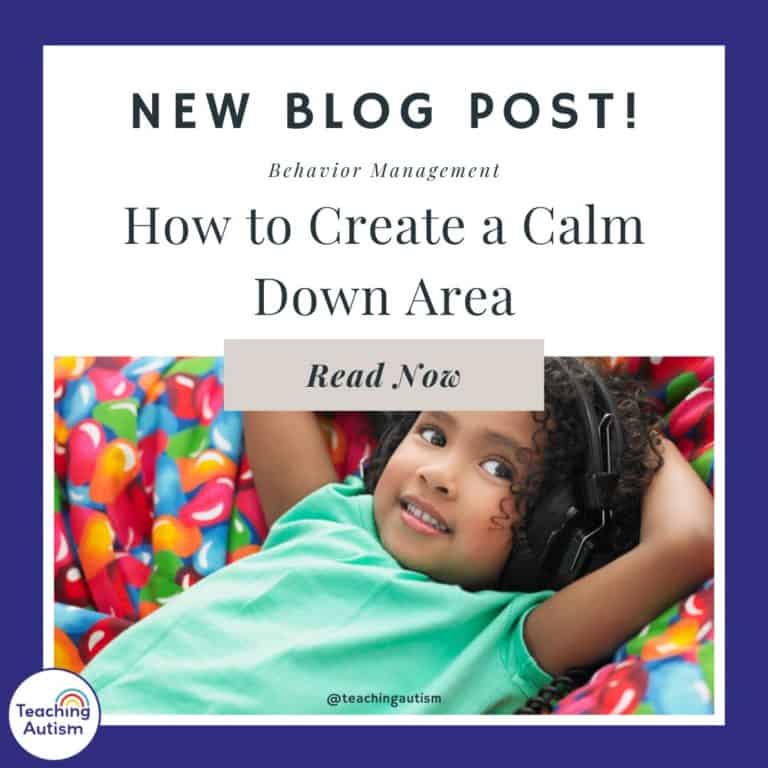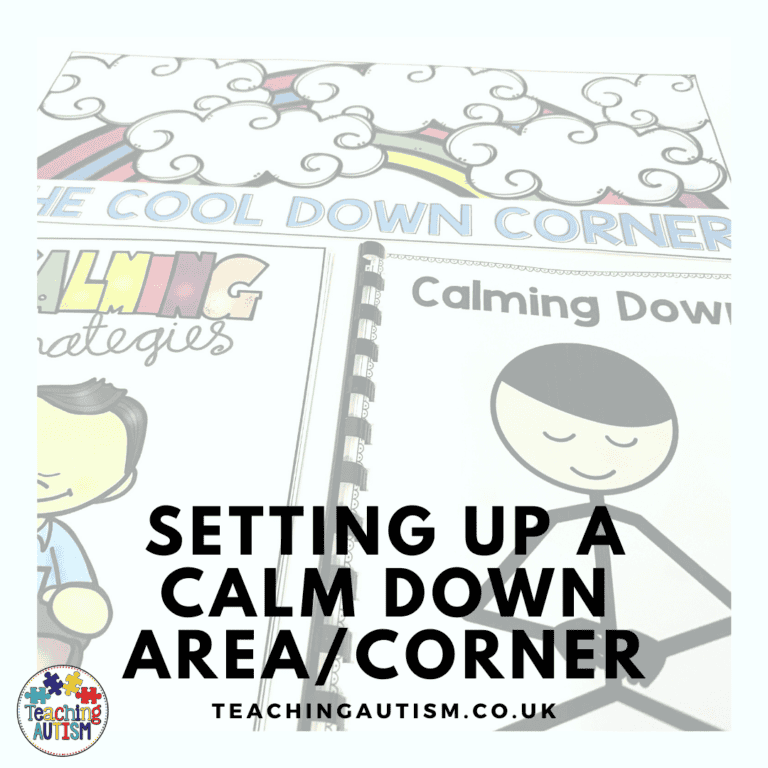How Can I Tell If My Student is Masking?
In this blog post today I’m answering a popular question that I have been receiving on social media, “How can I tell if my student is masking?” I’m going to be touching a little bit about what masking is, but if you want a more in-depth read about what masking is, what it looks like and the impact it has on individuals, you may want to click here and read the blog post ‘What is Masking?”
What is Masking?
Masking is what is known as a strategy that individuals use when they suppress their natural traits and behaviors. This is common for autistic individuals. People will mask for a range of reasons but it is usually in an attempt to confirm to societal norms and to fit in with their neurotypical peers.
How Can I Tell If My Student is Masking?
It can be really difficult to try and identify if someone is ‘masking’ or concealing their feelings, thoughts, traits or behaviors. Masking is often used as a coping mechanism and to fit into ‘society’ and their norms. If you are trying to identify if a student (or child at home) is masking, here are some ways to help you identify this;
1. Inconsistencies in Behavior
Try and identify any discrepancies in an individual’s behavior in different settings, situations and environments. When someone is masking, they may exhibit altered personas in different environments or surrounded by different people.
2. Burnout / Exhaustion
Masking is extremely exhausting for an individual. It requires not just mental energy, but emotional energy too. If you have a student who is often expressing that they are exhausted.. Especially after social interactions.. This may be an indicator that they are using a lot of energy to mask.
3. Over Preparation
A student who is masking may over prepared for social interactions. This can include rehearsing before conversations take place, over planning their responses,. And showing an unnatural level of concern for ‘social norms.’
4. Limited Emotional Range in Public
If your student is masking, they might display a limited range of emotions in certain situations – or out in public. This is because they are trying to keep their reactions neutral in an attempt to blend in and/or avoid drawing any attention to themselves.
5. Discrepancies Between Verbal and Non-Verbal Communication
Our non-verbal cues, like body language and facial expressions, can often reveal more than the words that we use. If you are noticing that what your student is saying, is not matching their non-verbal cues, then this may point to your student masking and not expressing their true thoughts / feelings.
6. Relying on Scripts or Canned Responses
Another thing to try and pay attention to with your student is to identify if they rely on repetitive phrases, jokes or responses.. Especially across different conversations. This may indicate that they are relying on learned scripts to try and navigate social situations.
7. Difficulties with Spontaneous Activities
Do you have students who find spontaneous activities or deviations from plans particularly stressful? If so, this can be from masking. A student who is making may find these situations stressful because it requires them to adapt quickly.. And this can be very challenging when wearing a mask and trying to maintain a facade.
8. Uncharacteristic Behavior When Alone / With Trusted Individuals
For students who are masking.. The only time that they show their true self is when they’re alone or with people that they trust deeply. If you are able to observe or learn about their behavior in these situations, you may get a better insight into the possibility (and extent) of masking.
What to Do If You Suspect Masking
So, you may have come to this blog post today because you have been suspecting a student of yours (or child at home) is masking. And now that you’ve learned about ways to identify if someone is masking.. You may be wondering how you approach this. So I’m going to try and give you some tips for how you can best navigate this situation.
First of all, it is really important to approach this topic with sensitivity and understanding. When an individual is masking, it’s because they are using a strategy that helps them to navigate the world. And this world is not always accommodating of their authentic selves. It is important that are offer a supportive, safe and non-judgmental space for our students to express themselves.
Here are some of my best tips for how to approach this situation;
1. Safe and Non-Judgmental Environment
First, start with creating that safe and non-judgmental environment that we discussed. Make sure that the area is private and comfortable. Your students are going to be more likely to open up to you if they feel safe, supported and included.
2. Use Open-Ended Questions
Try not to ask yes or no questions.. And instead aim for open-ended questions. These will help to encourage your student to share more about their experiences and feelings. Use questions like “How do you typically feeling in XX situation? “Do you ever feel like you have to act differently?” Gently invite them to talk without making assumptions.
3. Listen
This one is really important. There’s a different between listening and REALLY listening. Make sure you are giving your student your full attention. When they are talking, nod and use verbal affirmations.. Phrases like “I see.” “That sounds challenging.” Also use your empathy to acknowledge their feelings and experiences.. But don’t go in and try to immediately fix these. Just validate their experiences.
4. Share Your Observations – Without Assumptions
If you feel like the situation is appropriate.. Share your observations with your students about moments that it seemed like they were masking.. But do it without making any assumptions. Phrasing is everything here. Use questions like.. “I’ve noticed that sometimes you see uncomfortable in large groups. I just wondered how large groups make you feel?”
5. Educate Yourself
Try to find time to learn about masking. There are so many great websites online to learn about it.. And also social media groups. There’s a great Facebook group called Autism Inclusivity where you can ask questions and neurodivergent individuals will answer from their personal experience. It’s such a great way to get some first-hand experience.
This will also help you to become more compassionate.. And this knowledge can help you avoid any stereotypes / misconceptions.
6. Offer Support, Not Solutions
Try and avoid the urge to offer any quick fixes, even if it’s coming from a place of well-meaning. We all want to help our students and make sure they’re comfortable… But offering quick fixes isn’t always the best way to go about this. Let your student know that you are there to listen to them and ask them how you can support them.
7. Respect Their Privacy and Boundaries
Think of yourself, your privacy and your boundaries. Picture how you would feel if someone tried to force into those for you.. Now remember this when asking your student questions. If they’re not ready to talk about their experiences with masking.. That’s ok! Respect their decisions and reassure them that you are free if they wish to share or discuss anything in the future. Remind them that you are there and available.. And ask if there’s anything you can do to support them in the meantime.
8. Follow Up
Time goes by so fast, and it’s easy for weeks to slip by. If a student has opened up with you, be sure to try and check in with them. Let them know that your support hasn’t stopped just because you’ve identified the masking. Your support is ongoing.. And you’re always there for them. This will help to build a solid relationship where your student knows that you have an ongoing interest in their well-being…. And this will help them come to you again in the future if needed too.
I think it’s really important to remember that our goal isn’t to ‘unmask’ our student.. But to offer our support and understanding. And to find ways that we can make the environment support, inclusive and a positive, safe space where they feel that they can be their own selves authentically. And this won’t happen overnight, it can take time.
Helpful Links
You may find the following links helpful;
I hope you found this blog post helpful. If so, please consider sharing it with your friends and colleagues on social media.

P.S. Have you signed up for my VIP membership yet? If not, head on over and sign up now. You’ll get access to hundreds and hundreds of resources, templates, crafts and more being uploaded every month!
Nikki







